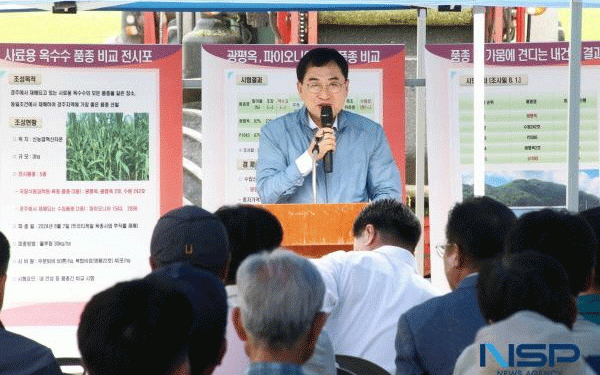On September 2, 2024, Gyeongju City held an important event at the new agricultural innovation center in Nae-nam-myeon, titled “Feed Corn Variety Evaluation and Mechanized Harvesting Demonstration.” This event attracted over 120 participants, including Gyeongju Mayor Joo Nak-young, City Council Chair Lee Dong-hyeop, city council members, and local farmers. The day featured evaluations of various corn varieties, demonstrations of mechanized harvesting, and exhibitions of packaging and informational displays.
Purpose and Significance
The primary goal of this demonstration was to identify the most suitable feed corn varieties for local conditions. With the significant portion of feed corn being grown as a follow-up crop after winter crops, selecting varieties that can withstand drought during the growing season is crucial. Furthermore, the event aimed to provide farmers with information to make informed decisions about corn varieties, ultimately helping to reduce seed costs.
Key Findings and Insights
The event evaluated five different feed corn varieties, focusing on factors such as drought resistance, lodging resistance, emergence time, and pest resistance. According to the comprehensive analysis, the variety ‘Gwangpyeongok’ received the highest score, proving to be the most suitable for Gyeongju’s specific conditions.
Gyeongju boasts the largest feed corn cultivation area among local governments in South Korea, covering 950 hectares. This extensive cultivation helps save approximately 6 billion won annually in feed costs, highlighting the crop’s role in reducing feed expenses for local farmers. Compared to imported varieties, local feed corn is priced more competitively at around 237,000 won per 20 kg bag.
Future Plans and Government Support
Gyeongju’s ongoing commitment to expanding feed corn cultivation is evident in its plans to continue increasing the cultivation area. Mayor Joo Nak-young emphasized the importance of these efforts in light of the national challenges of declining livestock prices and rising feed costs. The city aims to leverage the results from this demonstration to further reduce feed costs and support local farmers.
Additionally, the agricultural innovation center has set up comparative displays of the five evaluated corn varieties to assist farmers in selecting the most suitable options for their needs.
Gyeongju’s feed corn variety evaluation and mechanized harvesting demonstration represent a significant advancement in optimizing feed corn cultivation. By identifying high-performing varieties and showcasing efficient harvesting methods, Gyeongju is making strides toward improving crop yields and reducing costs. This initiative not only supports local farmers but also sets a benchmark for other regions facing similar agricultural challenges.




